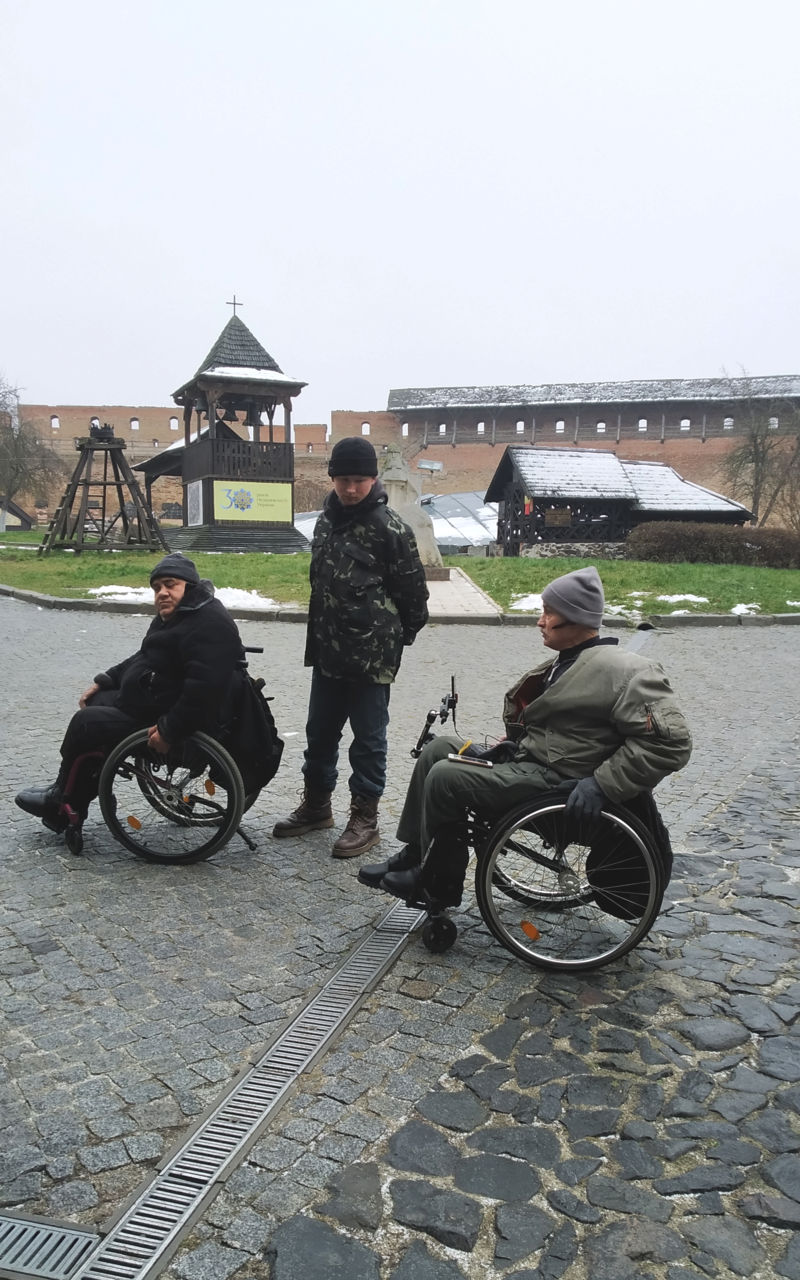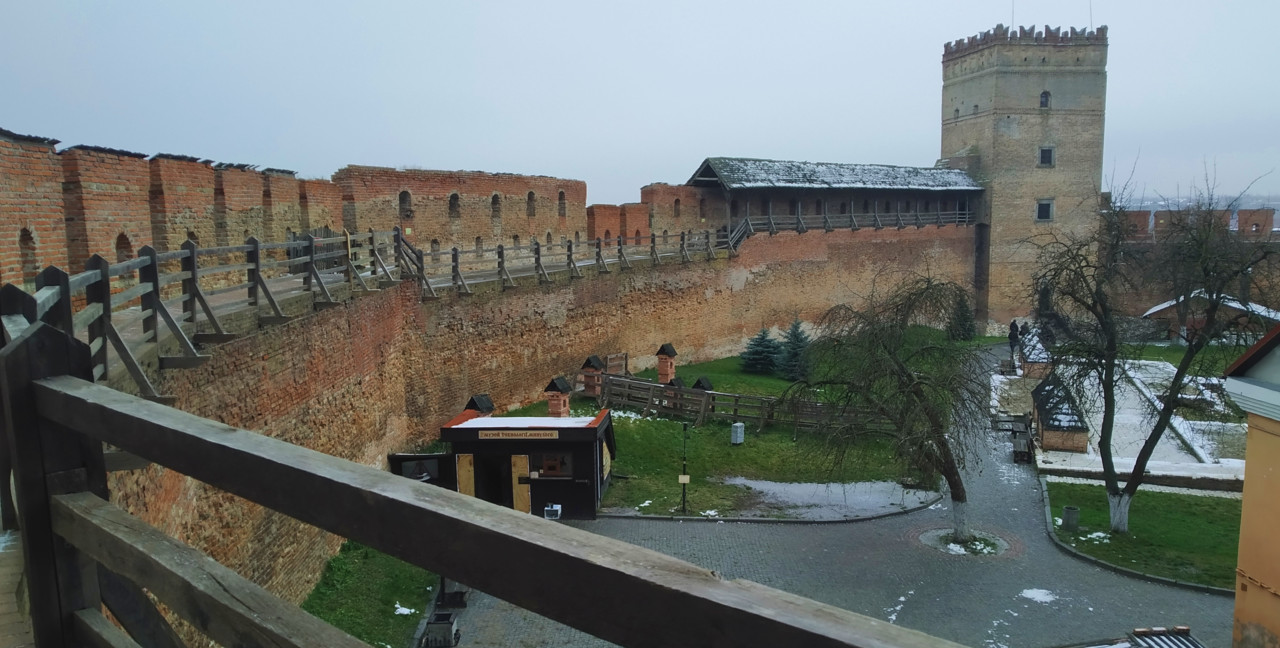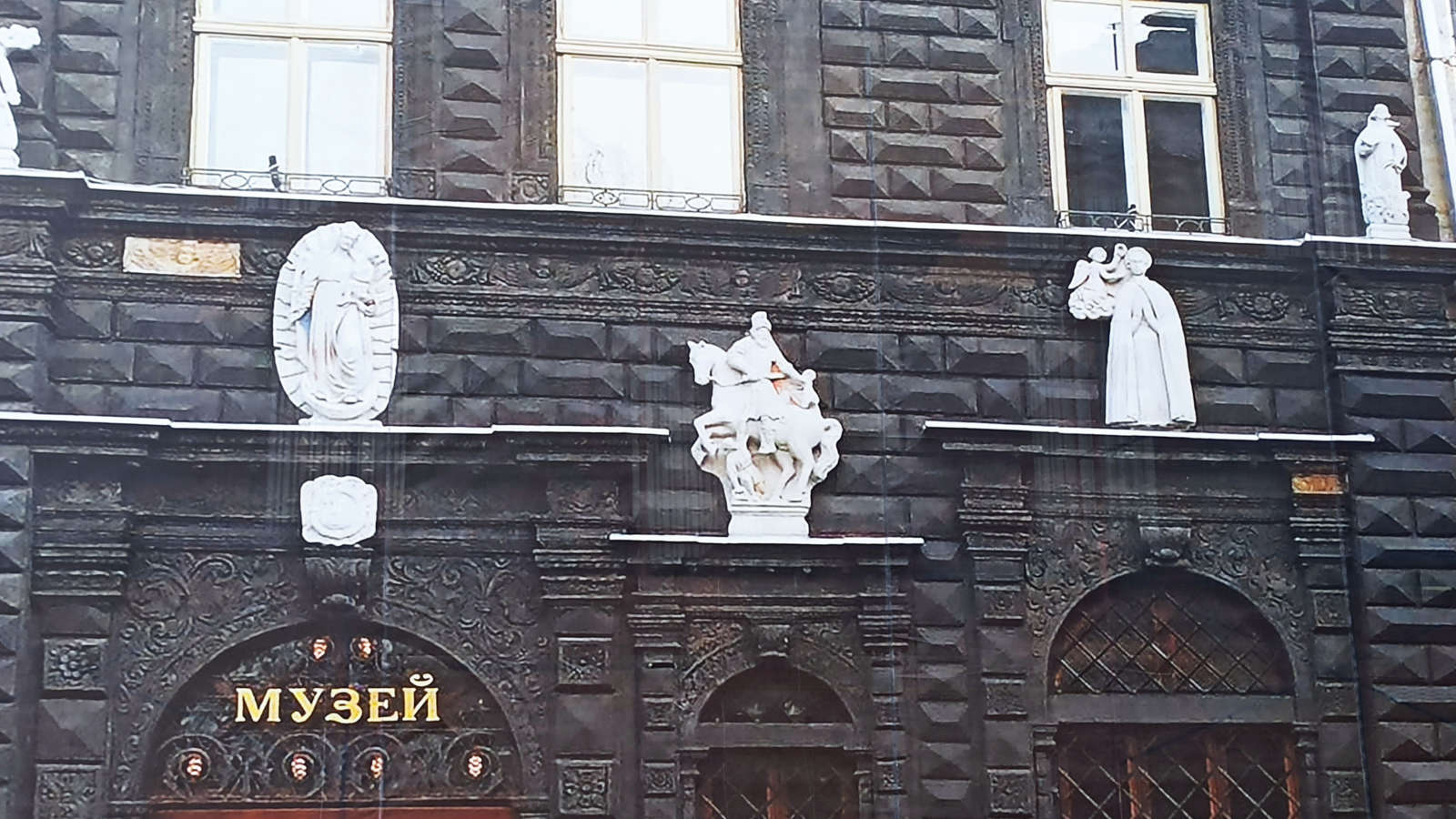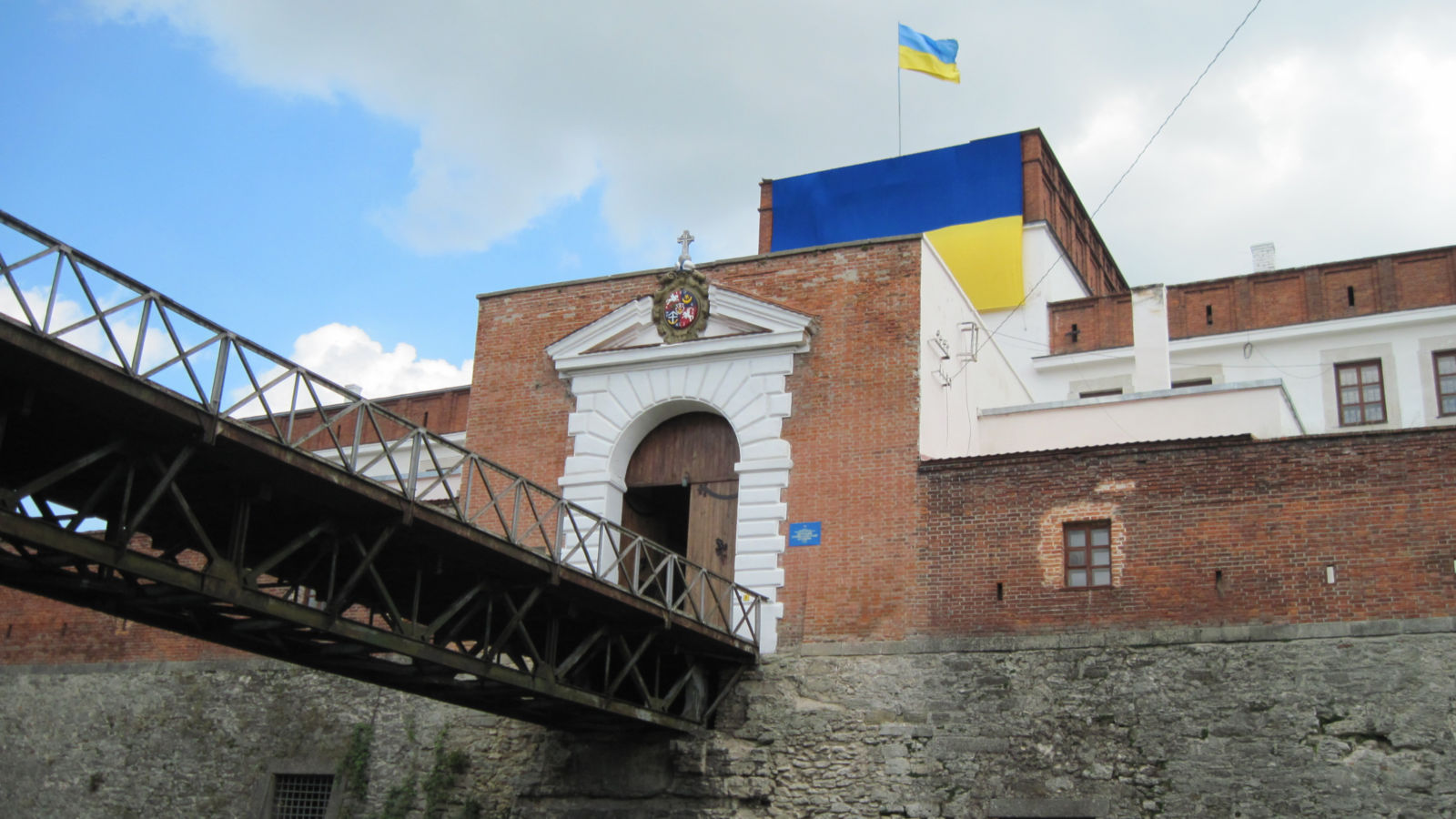People in wheelchairs can get into the Lubart Castle relatively conditionally through the central gate to the territory (however, only with the help of a volunteer or accompanying person). It is challenging to move in a wheelchair through the inner space of the castle (courtyard) due to the convex and unevenly paved cobblestones (risk of a person falling out of the wheelchair and getting injured). All objects on the territory are inaccessible to Persons with Reduced Mobility (PRM).
The exhibition hall (in the Museum of Bells), which is located on the second floor, is not accessible. However, people with visual impairments will be given a high-quality and comprehensive tour here and allowed to "examine" most of the exhibits by touch. These exhibits meet the primary conditions of safe tactility. The existing toilet facilities in the castle courtyard are not accessible to Persons with Reduced Mobility (PRM).
In front of the Entrance to Lutsk Castle is a tactile miniature copy of the castle.
Description

The landmark of the reserve, Lutsk's prominent landmark and architectural symbol, is the Lubart Castle. It is several ancient towers connected by walls. The castle in planning has a shape close to a triangle. This is due to the topography of the area. Defensive walls with towers are located on the edges of the hill. The walled area is home to many ancient buildings of different eras and shapes, as well as the bishop's house. These premises house museums dedicated to bells, weapons, antique books, ceramics, and paintings. The walls and towers of the castle are made of brick, and semi-arched and rectangular forms are used to decorate the towers. The Entrance to the castle is through the gate of one of the three towers.
The castle was built in the middle of the 14th century by Prince Lubart. It used to be the residence of princes. In the middle of the castle were residential buildings for the nobility and the higher clergy. Prince Lubart himself is buried in the dungeons of the castle. The height of the Exit tower, rectangular on the foundation, was originally three-tiered. In the 16th century, the size was increased by two more levels. In the same 16th century, a third tier was added to the Steer Tower and Vladycha Tower — two or three rows of loopholes replaced narrow slits-holes.
At the end of the 18th century, a noble house was built on the site of the princely house, which used to be adjacent to the southern part of the walls. This building is to the right of the entrance gate.
Unfortunately, St. John's Cathedral, located in the center of the castle yard, has not been preserved. The last historical construction of the castle was the bishop's palace. It was built in the 19th century in the then-fashionable style of classicism. It is located on the far left of the castle's entrance gate. Its facade is red with four round columns and a triangular portico.
The entire Lutsk Castle gives the impression of a legendary and special place. For a better and more profound perception of the historical environment, the following events are held these days: in addition to regular knightly tournaments, castle tours are also organized in the evening; the focus is on the effects of torches and other attributes of the Middle Ages.
Mode of operation
From Monday to Sunday, inclusive, from 10:00 to 19:00. Entrance to the reserve and excursion programs are priced according to the price list, including free entry for persons with disabilities of the 1st and 2nd groups. The cost of visiting museums on the territory of the reserve is included in the entrance ticket.
Address, contacts
St. Drahomanova, 23, Lutsk
tel. (0332) 72-34-32, 72-48-88,
zamok.lutsk@ukr.net
Official source
https://ua.igotoworld.com/ua/poi_object/71253_zapovednik-staryy-luck.htm#/google_vignette


